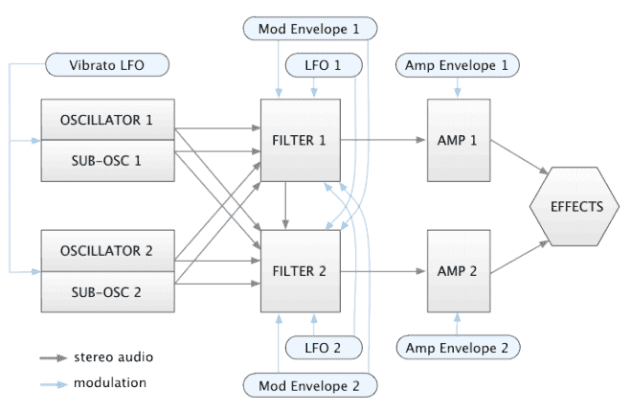

non-distorting state variable filter model. Also try Input Gain values below 0.00 dB. Turn up the resonance for interesting, unpredictable results. DIRTY Oversampled self-oscillating diode ring filter model.



A feature that is copied throughout the synth and that forms great starting points for your own preset design. CLEAN Slightly wider oscillator detune, linear envelope attack, exponential decay and release, linear (non-distorting) ëstate variableí filters, no oversampling.Įxperimentation is key with these 3 modes, definitely a cool addition to this synth.Īlso worth mentioning is that oscillator section has a small down arrow symbol in the menu, if you click on that, a list of presets is opened.DIRTY Evenly-spaced oscillator detune, exponential envelope stages, oversampled self-oscillating ëdiode ringí filter.NORMAL Exponential oscillator detune, s-shaped envelope attack, short decay, oversampled self-oscillating ëladderí filter model with non-linear resonance.Here’s a little explaination of the 3 different modes: It even affects the way the filters behave. There are 2 main oscillators that also have a sub osc and in the middle are the different engine modes that HIVE has. The engine modes are a cool little feature where you can alter the caracter of each sound slightly through altering the engine mode that suits your sound the best. The next row on the UI is where the oscillators are situated. There’s also preset selection (in good U-He tradition, Hive is chockful of good presets), the save menu, undo, redo, output and at the far right a cog wheel (click on it and you get to the MIDI controller and preferences menu.) In the preferences menu you can alter things like the default skin, UI size, text anti aliasing (for better readability) and more. Here we have a new product from U-He that was released a while ago, is their new synth called HIVE. U-He is known for their very elaborate synths like Zebra, Diva etc., but HIVE walks a different path. This is a synth that is both low on CPU and very easy to work with. The user interface is divided into 2 equal halves and in the centre of it is a hexagon, that looks like beehive, hence the name HIVE. The filosophy behind the symmetrical setup it is that you can easily layer two voices in a simple way for quick results.Īt the top of the User Interface is the control bar. This is where you can select several voice modes (poly, mono, legato & duo), along with transpose and fine tune.


 0 kommentar(er)
0 kommentar(er)
